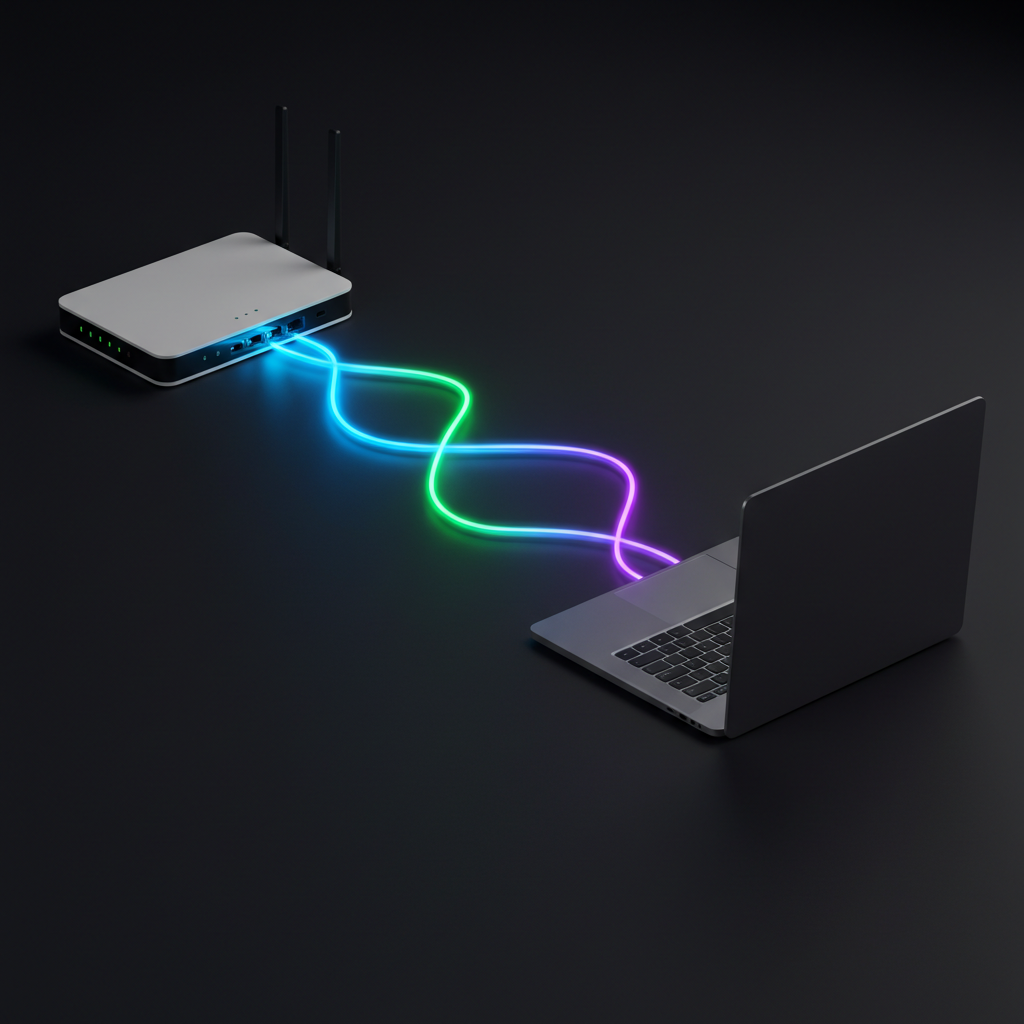You’re shopping for a new laptop or router, and you see a new logo on the box: Wi-Fi 7. You know that newer is usually better, but what does it actually mean? Is it just a little bit faster, or is it a revolutionary leap?
This guide will explain the next generation of wireless technology in simple terms and help you decide if you need to upgrade.
What Is Wi-Fi 7 (and Why Is It a Big Deal)?
Wi-Fi 7, officially known as IEEE 802.11be, is the latest standard in wireless networking technology. While it is significantly faster than previous versions, its main goal isn’t just about raw speed. The primary focus of Wi-Fi 7 is to dramatically reduce latency (lag) and increase stability, especially in environments with many connected devices. It’s designed for the future of 8K streaming, cloud gaming, and AR/VR applications where a stable, responsive connection is critical.
The Key New Features Explained
Wi-Fi 7 achieves this through a few key technological breakthroughs:
- Wider Channels (320 MHz): Previous standards used channels up to 160 MHz wide. Wi-Fi 7 doubles this. Think of it like doubling the number of lanes on a data highway—it allows for a much higher volume of traffic to flow at once, increasing potential speeds.
- Multi-Link Operation (MLO): This is the most significant new feature. In the past, your phone or laptop would connect to your router on a single band (either 2.4 GHz, 5 GHz, or 6 GHz). With MLO, a Wi-Fi 7 device can connect to and share data across multiple bands at the same time. If the 5 GHz band suddenly gets congested from your neighbour’s network, your device can seamlessly use the 6 GHz band without dropping the connection. This dramatically improves stability and reduces lag.
- 4K-QAM (Quadrature Amplitude Modulation): In simple terms, this is a more efficient way of packing data into the Wi-Fi signal. It allows for up to 20% higher data transmission rates compared to the 1K-QAM used in Wi-Fi 6/6E, leading to higher peak speeds.
So, Do You Need to Upgrade Today?
For most people, the immediate answer is likely no. To get any benefit from Wi-Fi 7, you need a complete ecosystem:
- A Wi-Fi 7 Router
- A Wi-Fi 7 Device (like a new phone, laptop, or tablet)
If you only have one without the other, you won’t see the advantages.
However, if you are an early adopter, a competitive gamer sensitive to lag, or someone looking to buy a new high-end router or device today, choosing a Wi-Fi 7 compatible model is a very smart way to future-proof your home network for the coming wave of new technologies.
Conclusion: Building a Faster, More Stable Future
Wi-Fi 7 is a major leap forward, but its focus is less on just increasing a theoretical top speed and more on creating a more robust, responsive, and reliable wireless experience for the demanding applications of the future. While you may not need it today, it’s the standard that will be powering our connected homes for the rest of the decade.

